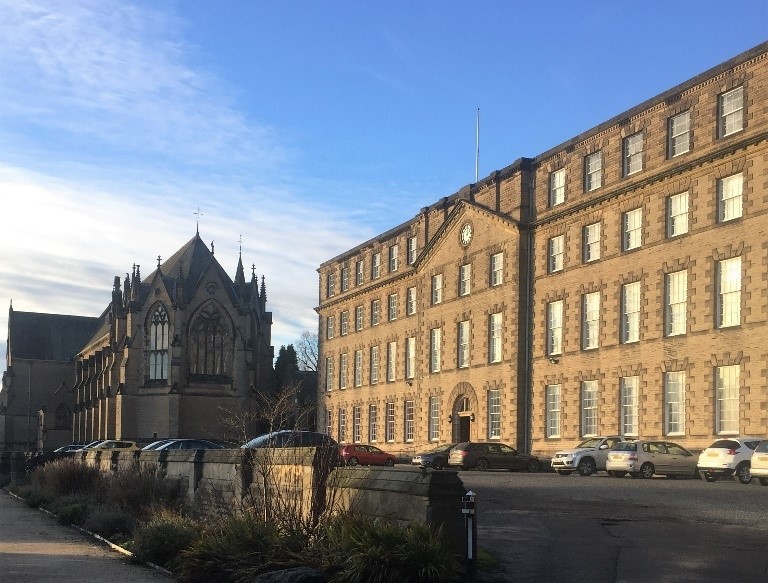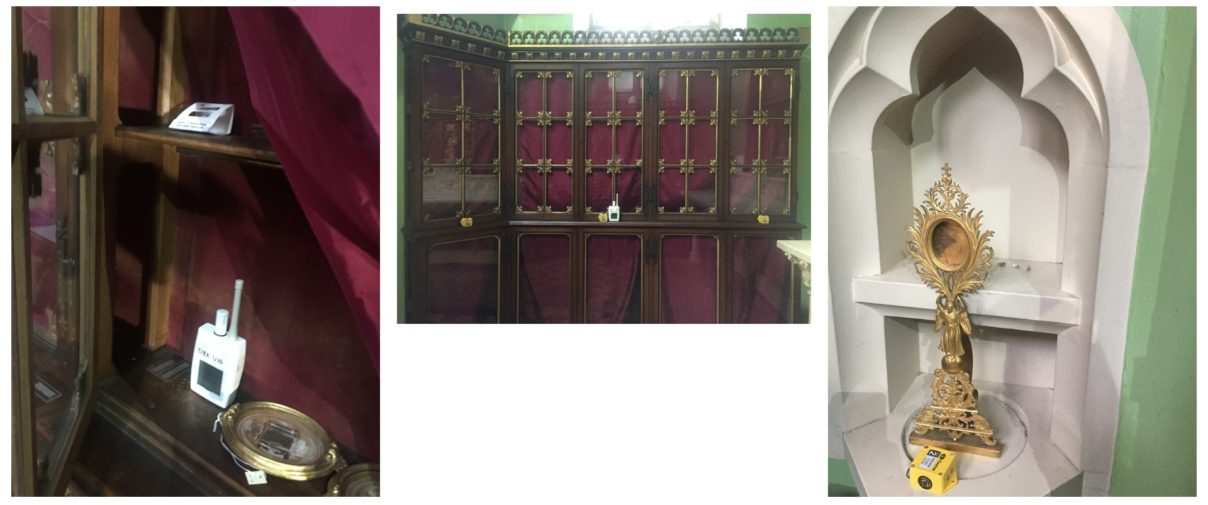Second Year Dissertation Experience

to the west of city Durham. The front of the
main building is seen to the right and the
Chapel of St. Cuthbert is seen to the left
For the second year of the course, students can choose to complete either a professional practice placement or a dissertation. While most students pack-up and head to conservation labs throughout the U.K. – and beyond! – I have chosen to stay in Durham to pursue a dissertation. Based at Ushaw College, I am working to monitor, analyze, and report upon the environmental conditions relating to a collection of eighteenth-century relics; a sort of professional practice in preventive conservation, if you will. My research will contribute to the ongoing collections management work at Ushaw College. Since closing as an active Catholic Seminary in 2011, Ushaw College, in conjunction with Durham University, has been striving to make their collections better available to scholars. An important step in reaching this goal is the appraisal of the condition of the collections and the condition of their storage environments.

relics in the collection. This selection was
conserved and photographed for
Treasures of Ushaw College: Durham’s
Hidden Gem.
My research focuses on the Chapel of the Holy Family, more causally known as the oratory, where the relic collection was stored after being acquired by the college in 1860. Curated in the early eighteenth century by Don Nicola Antonio de Bonis, a Neapolitan ecclesiastical lawyer, the collection consists of approximately eight hundred individual relics housed in two hundred baroque reliquaries. The reliquaries are primarily metal or glass; however, working with the collection requires the consideration of a wide range of materials – including wood, metal, textile, glass, wax, paper, and plant and human remains. Upon their arrival at the college, the relics were stored in purposed built wooden cabinets within the oratory.

built to house the relic collection can be seen
on either side of the altar.
At present, the poor environmental conditions in the oratory have necessitated moving the collection of relics into a temporary storage location. I choose to focus my environmental research on the oratory due to the high risk of environmental damage to the relic collection and building fabric itself and the possibility of regaining the contextual value of displaying the collection in their original location. My research in the oratory includes accurately recording the current environmental conditions, understanding the factors driving the environment, and providing conservation solutions. To do so I am monitoring relative humidity, temperature, light, dust, gasses, and pests in the room.

Tingytags (center and right) and Hanwell (left and center)
monitors are used to monitor temperature and relative
humidity. Blunder traps (left) are used to monitor pest activity.
I am currently in the midst of the environmental monitoring. It’s always exciting to check the progress each week! Come March, I’ll be finishing up the monitoring and focusing on the analysis and report aspects of the project. I’m looking forward to all the discoveries the next few months will bring!
Casey.
